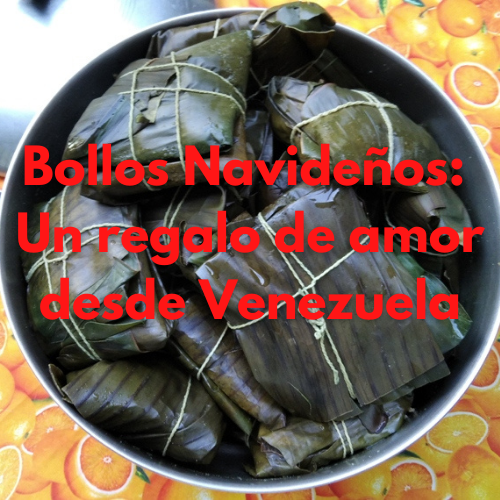
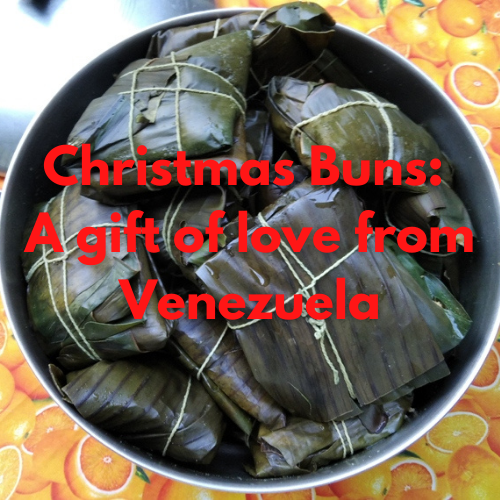

- 2 kg de hojas de topocho o cambur, ahumadas, limpias y cortadas.
- 2 kg de harina de maíz.
- 1 kg de carne de cerdo o cochino, que tenga algo de grasa o tocino.
- 1 kg de carne de res, que sea un corte gustoso y magro. Yo utilizo pecho.
- 1 pechuga o 2 muslos de pollo.
- 500 gramos de aceitunas.
- 500 gramos de pasas.
- 250 gramos de alcaparras.
- 300 ml de aceite bien onotado.
- 1 botella de salsa picante de 150 ml, (si fuese por mí, le colocaría dos, pero a algunos miembros de la familia no les gusta la comida tan picante).
- 250 ml de ron, cocuy o vino, cualquier licor que tengan a la mano, para remojar las pasas.
- 1 ajo porro, unas ramas de cebollín, unas ramitas de cilantro de España; y si tienen también pueden añadir cilantro de monte o culantro.
- 1 ½ kg cebollas.
- 2 pimentones grandes.
- 2 cabezas de ajo.
- 350 gr de ají dulce.
- Sal al gusto para todas las preparaciones.
- Comino molido (al gusto).
- Orégano molido (al gusto).
- Vinagre blanco para sofreír los aliños y para limpiar las hojas.
- 1 bollo de hilo pabilo o cualquier otra fibra que sirva para atar alimentos que serán cocidos.
- Agua para cocción de las carnes, de los bollos y para el amasado.
- Una olla amplia, que permita introducir cómodamente los bollos en agua hirviendo y cocinarlos por aproximadamente una hora.
- Paños para limpiar y secar las hojas de topocho o cambur.
- Tablas y cuchillos para picar carnes y aliños.
- Paleta para remover.
- Cuchara o cucharón para servir el caldo.
- Ollas para cocinar las carnes previamente por separado, aunque si tienen ollas de presión o exprés, aún mejor para acelerar la cocción.
- Un caldero u olla amplia para preparar el guiso.
- Un recipiente amplio y cómodo para amasar.
- Tijera.
- Un colador (para colar los caldos).
- Licuadora (para colar los aliños de los caldos).

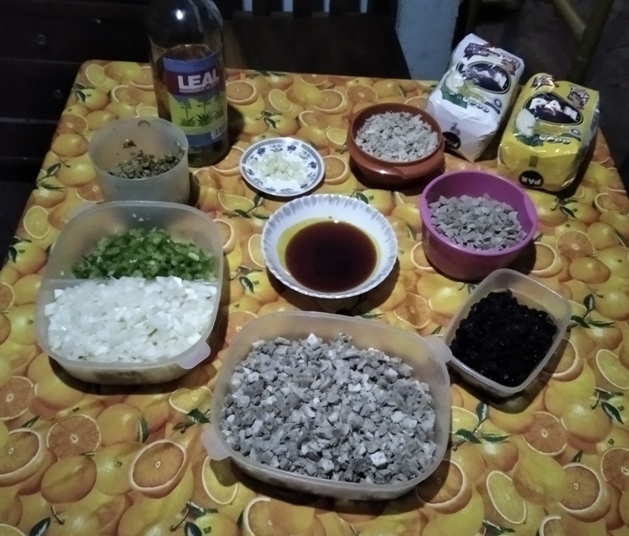.jpg)
- 2 kg of topocho or banana leaves, smoked, cleaned and cut.
- 2 kg of corn flour.
- 1 kg of pork or pork, which has some fat or bacon.
- 1 kg of veal, which is a lean and tasty cut. I use chest.
- 1 breast or 2 chicken thighs.
- 500 grams of olives.
- 500 grams of raisins.
- 250 grams of capers.
- 1 bottle of hot sauce 150 ml, (if it were up to me, I would put two, but some members of the family do not like food so spicy).
- 250 ml of rum, cocuy or wine, whatever liquor they have on hand, to soak the raisins.
- 300 ml of oil well colored with onoto or achiote.
- 1 leek, a few sprigs of chives, a few sprigs of coriander from Spain; and if they have it, they can also add wild coriander.
- 1 ½ kg of onions.
- 2 large bell peppers.
- 2 heads of garlic.
- 350 gr of chili pepper (sweet, not spicy).
- Salt to taste for all preparations.
- Ground cumin (to taste).
- Ground oregano (to taste).
- White vinegar to fry the dressings and clean the leaves.
- 1 bun of wick thread or any other fiber that is used to tie the food to cook.
- Water for cooking meats, buns and for kneading.
- A large pot that allows the buns to be comfortably dipped in boiling water and cooked for about an hour. * Cloths to clean and dry the topocho or banana leaves.
- Tables and knives for mincing meats and dressings.
- Paddle to stir.
- Spoon or ladle to serve the broth.
- Pots to cook the meats previously separately, although if they have a pressure cooker or express, even better to speed up cooking.
- A cauldron or a large pot to prepare the stew.
- A spacious and comfortable container to knead.
- Scissors.
- A strainer (to strain the broths).
- Sieve (to strain the dressings from the broths).
- aquí hablo de su uso para problemas de vesícula
- aquí expongo con más detalles sus beneficios medicinales y alimenticios
- here I talk about its use for gallbladder problems
- here I expose in more detail its medicinal and nutritional benefits


These leaves must be passed through direct fire, in order to make them more flexible so that they do not break when bent. After this procedure is done, they are cut into an approximate size of 20 cm x 20 cm, but there are also larger and smaller pieces of leaves that will also be used. Once cut, they are cleaned with a cloth soaked in water with white vinegar, and then proceed to dry them with another cloth. In my case I carry out this simple washing, because I plant and harvest my leaves myself and I know that I do not use pesticides and they are not exposed to any contamination, but if they are bought from outside, a more thorough washing and disinfection is required.
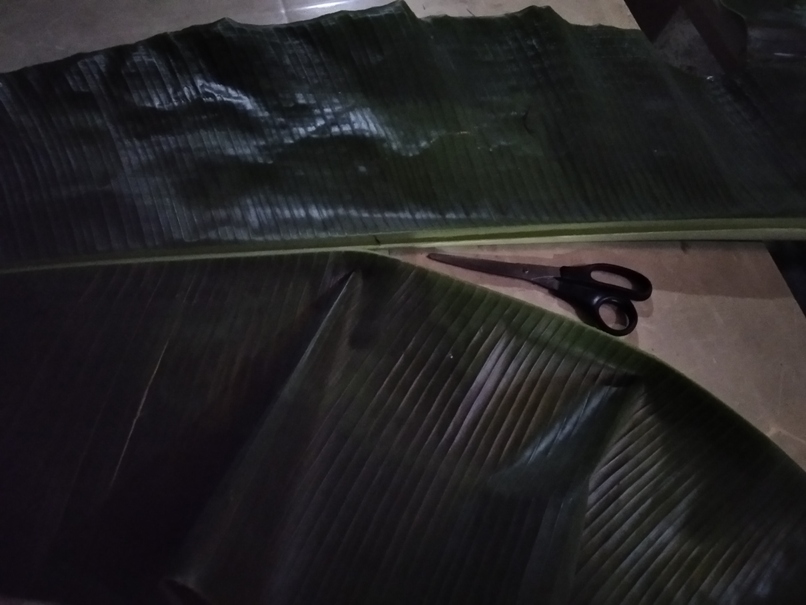.jpg)
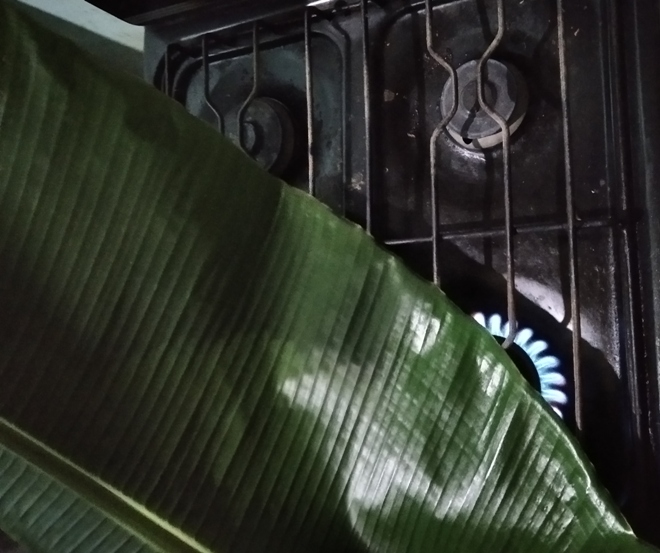.jpg)
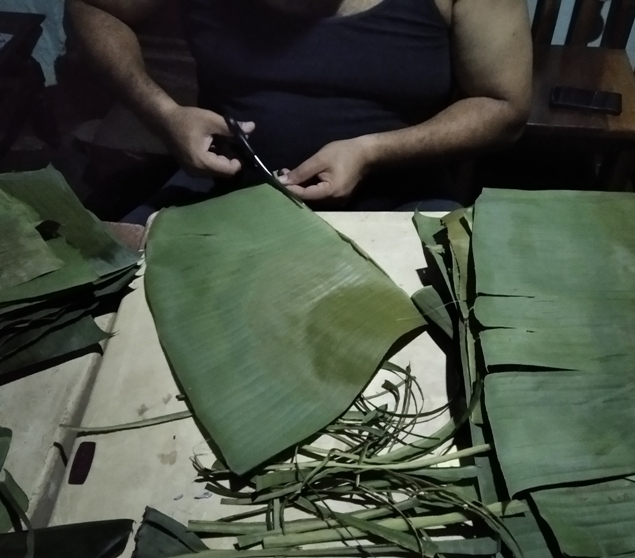.jpg)

Prior to the process of harvesting, roasting, cutting and cleaning the leaves, it is necessary to advance the stew that is the main star of the dish, as it adds flavor and substance to the Christmas buns. For this, each of the meats are cooked separately, as they have different cooking times and thus can also fully express their flavor; flavors that will then be amalgamated in a delicious stew and a wonderful dough. Each meat will be cooked for the appropriate time until tender, in sufficient water, with the seasonings that combine the most. In my case I used onion, chives, garlic, chili, leek, paprika, cumin, oregano and salt. To the chicken, of which I did not take photos, I also added some sprigs of coriander from Spain. I would have loved to have wild coriander to use with beef, but my plants had dried up.
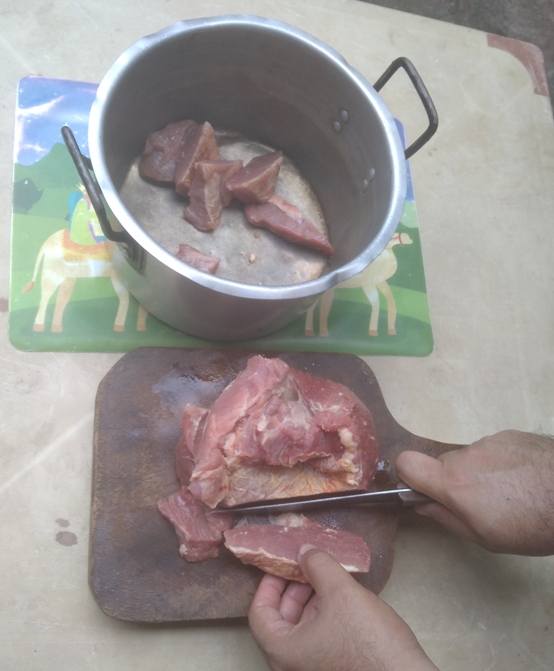

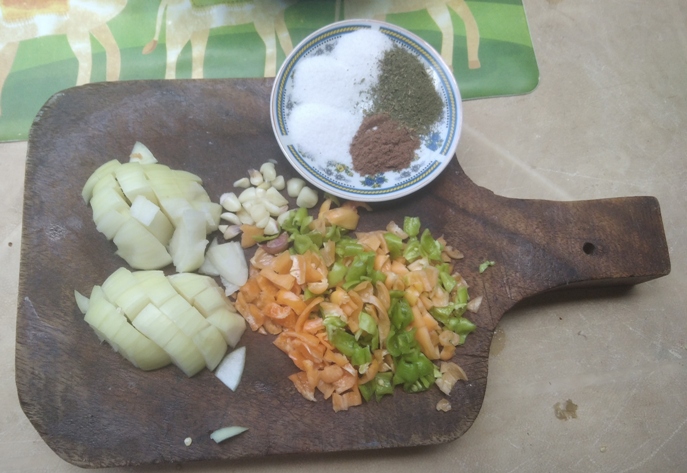
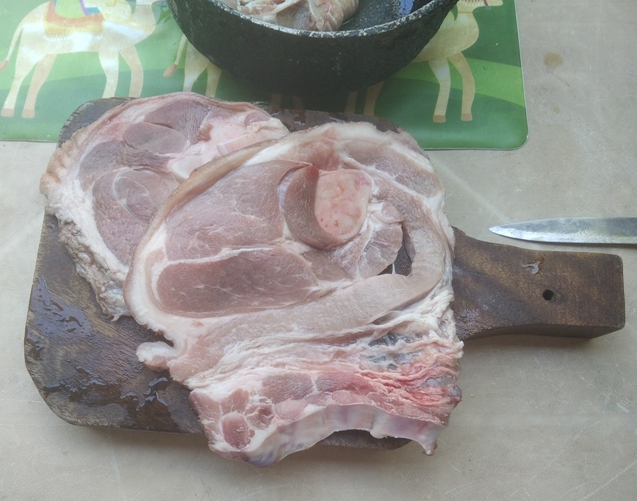

Once the meats are cool, they proceed to extract them and strain the broths. These broths can be mixed and reserved, as they will be used to make the dough and hydrate the stew. The seasonings that remain in the strainer are blended and added to this stock mixture. Later, the meats are finely cut, in the case of chicken, it is shredded. It is necessary to remove any ribs, skin or unpleasant tissue to taste. Likewise, more dressings are carefully cut (onion, leek, paprika, chili, garlic, chives), and also olives and capers; I particularly love olives with seeds, the ones that are stuffed seem absolutely tasteless, therefore, I buy them with seeds, I put them to soak in water and rinse at least twice, to remove the salt and vinegar ; and I proceed to chop them removing the center. Half of the olives will go to make the sauce of the stew and the other part is incorporated directly into the dough. I put the capers to soak in water as well, rinsing them at least three times and peck them slightly, they will go entirely to the stir-fry of the stew. The raisins are put to soak in liquor, so that they absorb the delicious flavor of a good cocuy, of a rum, wine or light cane. All this is being reserved for the peak moment in which we mix everything to make our stew.

Time to make the delicious stew. For this we need a large cauldron or pot, which allows to fry and mix all the ingredients. First, I put a good amount of well colored oil in the cauldron, about 100 ml, over high heat. First I add the garlic, then the onion, the paprika, the chili, the chives, the capers and the olives; then the pork, waiting for it to brown a little, since this allows making small pork rinds that are delicious when biting into the buns. Later the other meats are added. I usually incorporate a teaspoon of white vinegar, which allows the flavors to express themselves even more. I also add the liquor that is left after draining the raisins. Once everything is well fried, I add three-quarters of a liter of the broth mixture, correct the salt, stir well, under the heat and cover the pot, thus allowing the flavors to integrate. I cook for about 30 minutes, then turn off the heat and let it sit until it reaches room temperature.
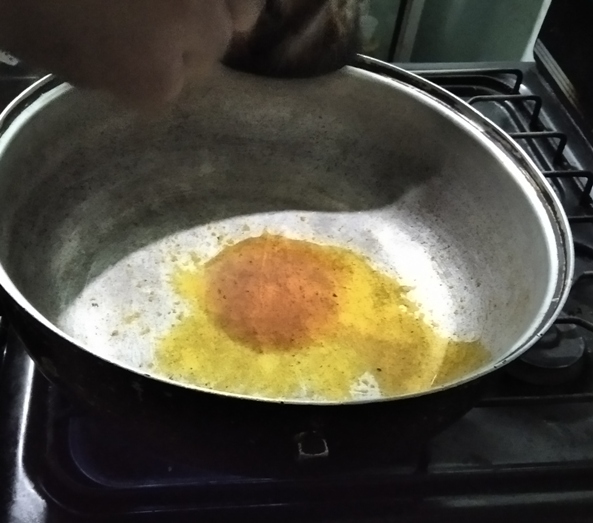.jpg)
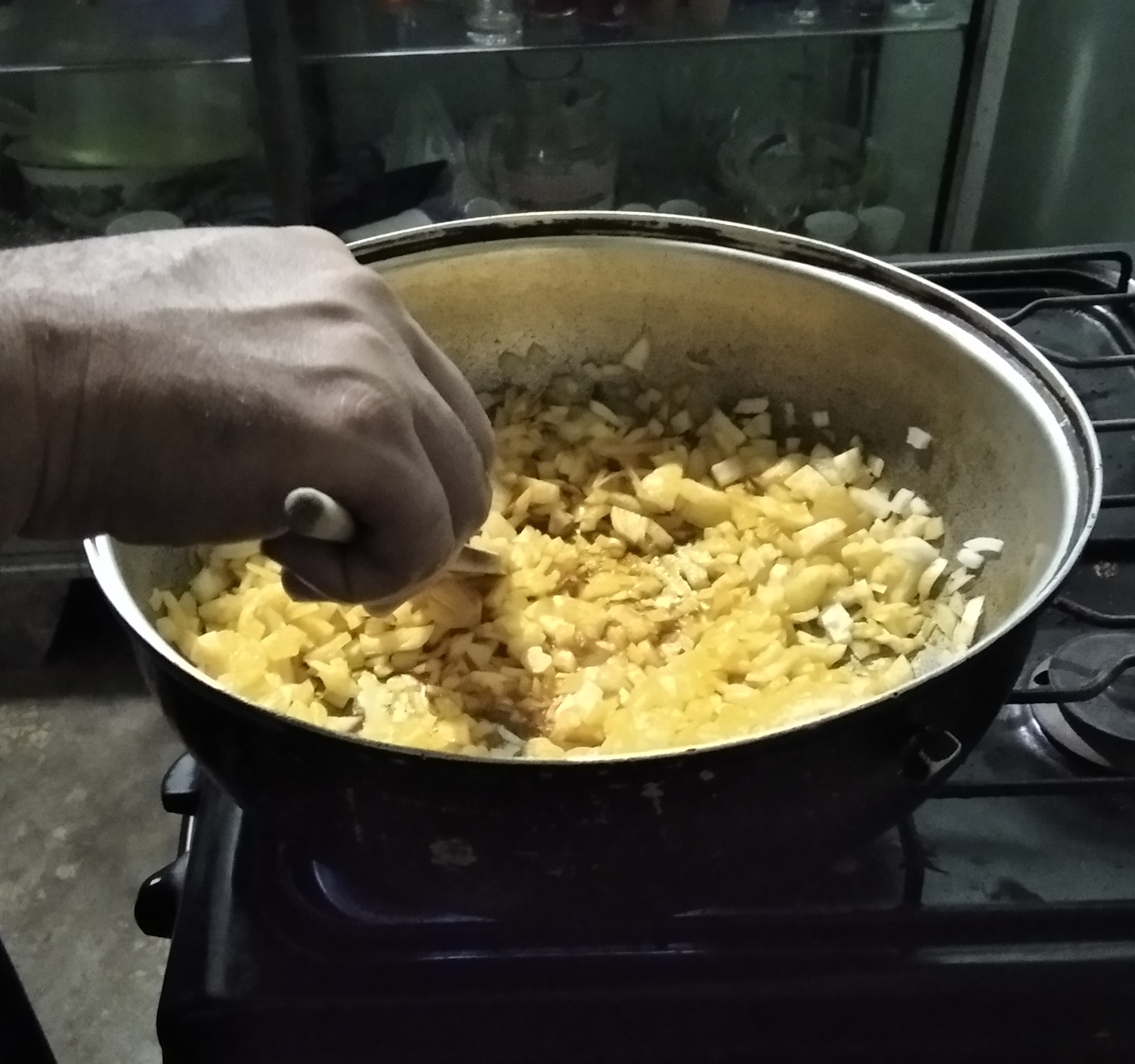.jpg)
.jpg)

While the stew is cooling, I color the cornmeal. As you can see, I used two kilos, one of the traditional flour and another that has rice flour among its components. I did it this way because they were the ones that were available, but I highly recommend using only the traditional one, since the smell and taste varies slightly when using the ones that come with additives. I empty the two packages into a large bowl, which allows me to handle the dough well (well, my husband, since he was the one who knead). Then, while the flour is still dry, I add the colored oil little by little (between 150 and 200 ml), and integrate it into all the flour, for which I can first serve myself with a teaspoon, and then by hand. . In the end, all the flour will have a chick yellow color. Once colored, I proceed to gradually add the flour to the broth mixture, (they are approximately 3 liters), while kneading, until it reaches the right consistency to make arepas. You should use more water (about a liter and a half more) at room temperature.
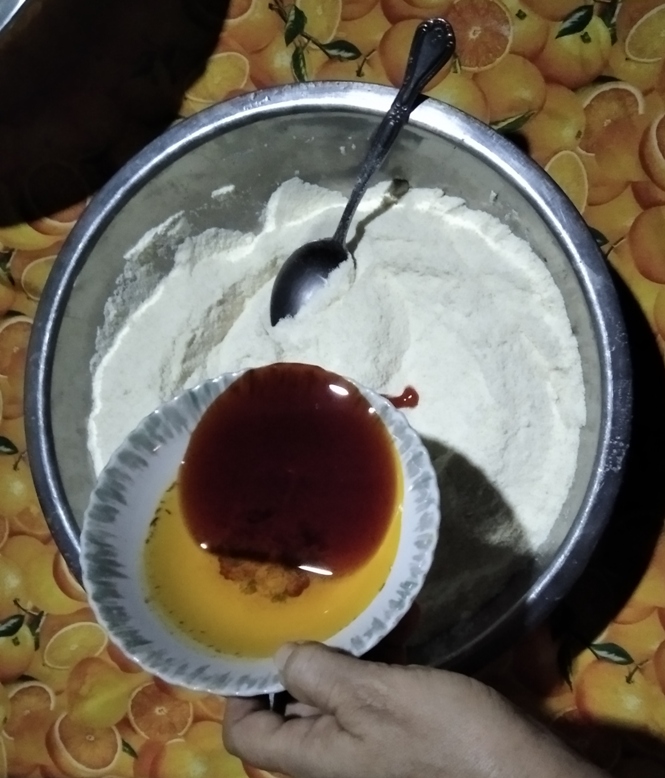.jpg)
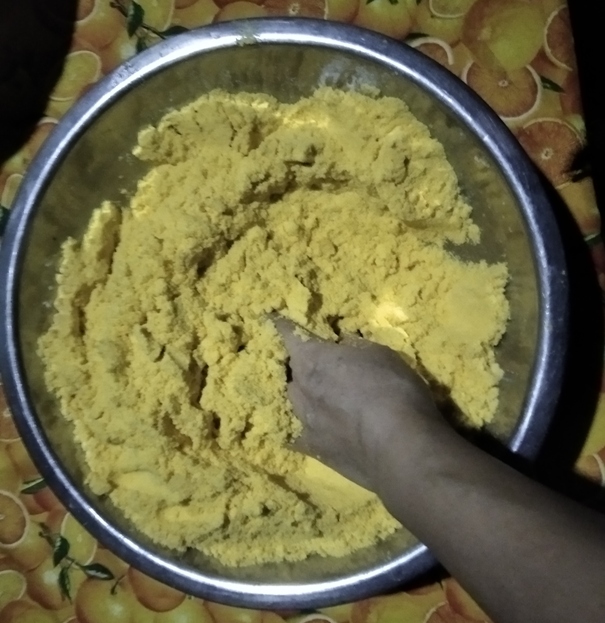.jpg)
.jpg)
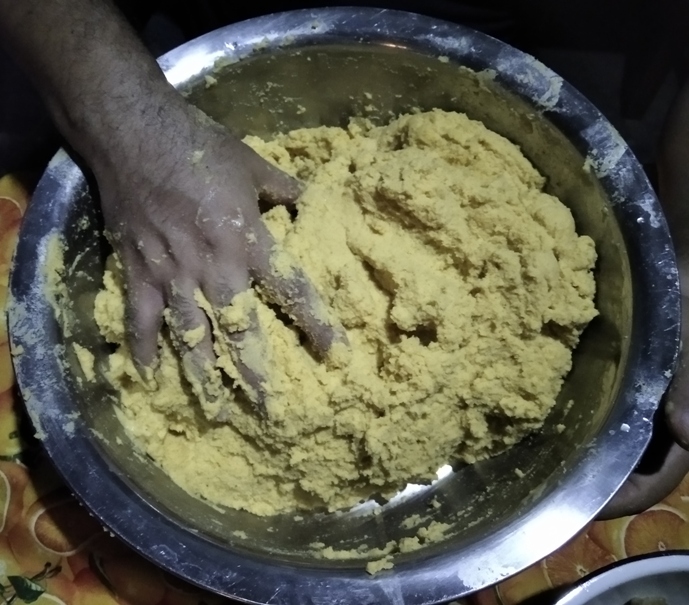.jpg)

Once the flour has been kneaded with the broths, the stew, the spicy bottle and the already drained raisins are added, little by little, following the kneading process. The stew will change the consistency to the dough, making it smoother. It is necessary that once everything is integrated, the salt is rectified. If you require more salt, then this will be dissolved in a little water and gradually added to the mixture, in order to distribute it evenly. If the mixture is too smooth, which makes it difficult to handle, you can sprinkle it with a little more flour. This mixture is allowed to stand for 20 minutes.
.jpg)
.jpg)
.jpg)

While the mixture is resting, take a portion between 80 and 120 grams in weight and place it in the center of one of the already chopped mole leaves. We proceed to make the corresponding folds, a kind of perfect, delicious and loving origami, which will wrap a piece of Venezuela inside. The leaves may break when making a fold, so it is necessary to reinforce them with another. Once this packet is assembled, it is tied with a piece of string or wick. The size of the rope is approximately one meter. Now, in our case, we did what is called a persogo. A persogo is a bundle of two buns tied together, but this is not mandatory, you can tie each bun individually.
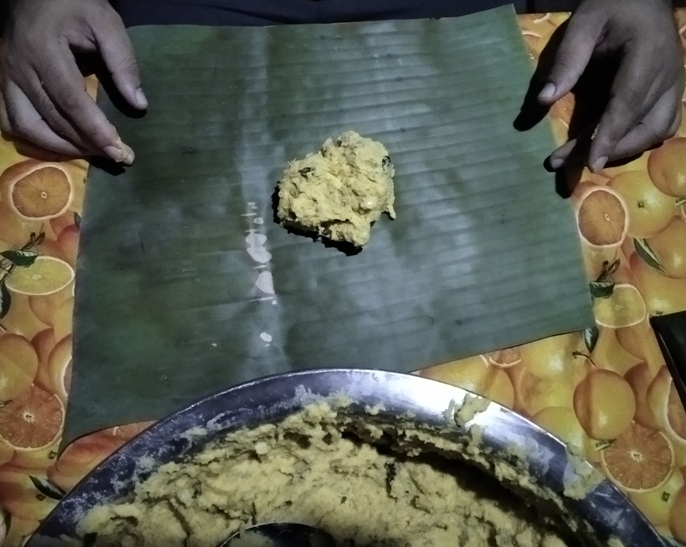.jpg)
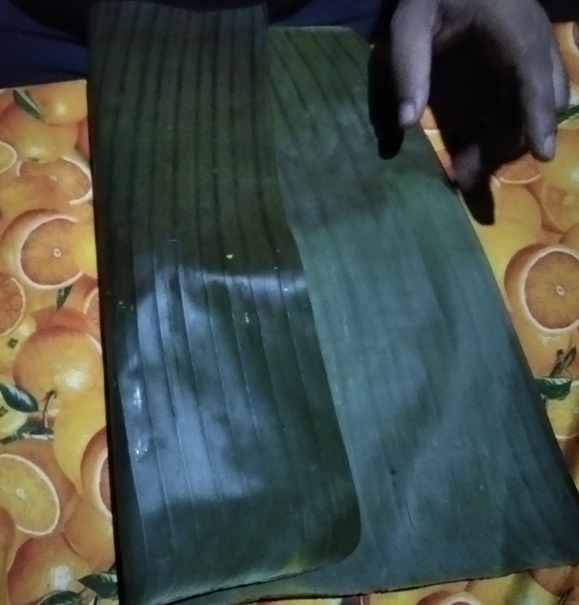.jpg)
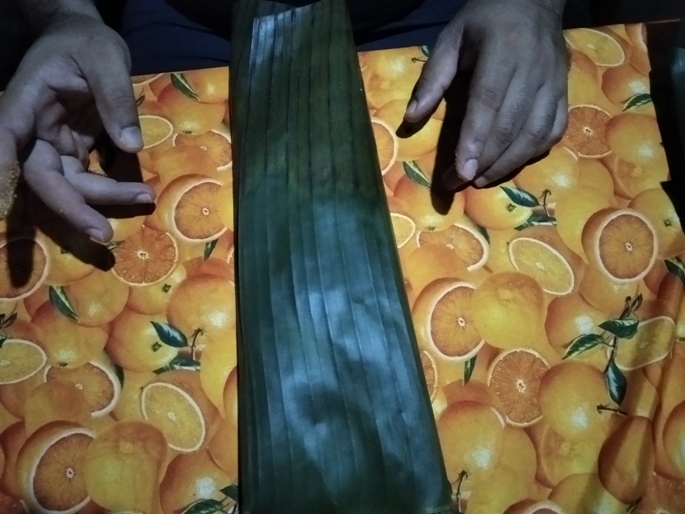.jpg)
.jpg)
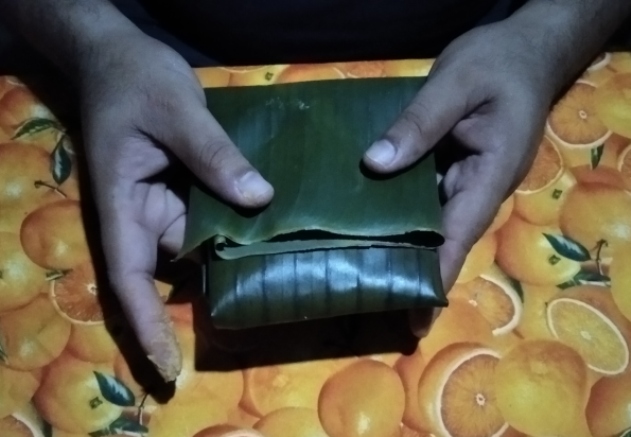.jpg)
.jpg)
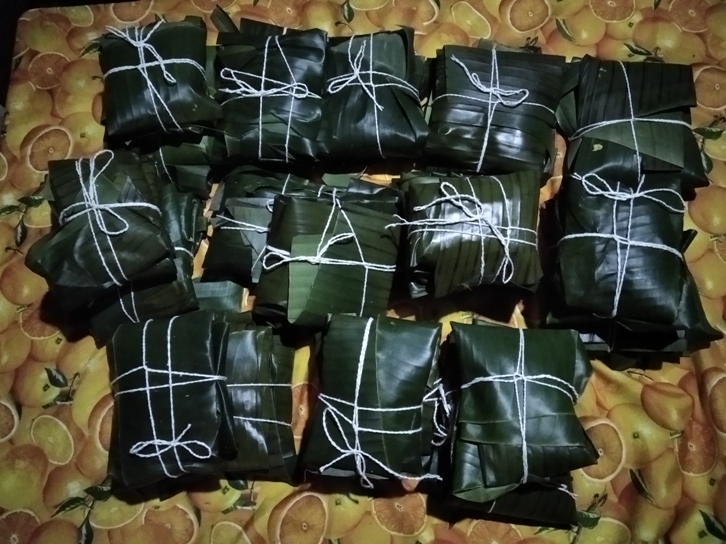.jpg)

The buns or persogos (as the case may be), are placed in a large pot containing boiling salty water. They are placed inside, in such a way that they are completely covered by the water. Place the lid on the pot and cook for 30 minutes over high heat. After this time, the position of the buns is reversed, so that they cook evenly, and leave for 30 more minutes. Once the cooking time is over, they are removed from the pot and left to drain and cool. These buns can be kept frozen for up to 6 months, and without freezing for a week. If they are cold, the way to serve them is to heat them in boiling salty water for about 10-15 minutes, drain them, open them and place them on the plate. They can be a main dish, but also a side. I recommend eating them with added hot sauce and chunks of white cheese. It is an exceptionally delicious dish. Enjoy your meal!

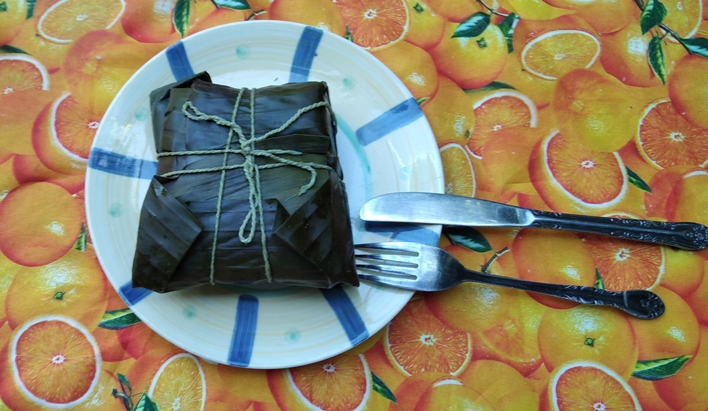

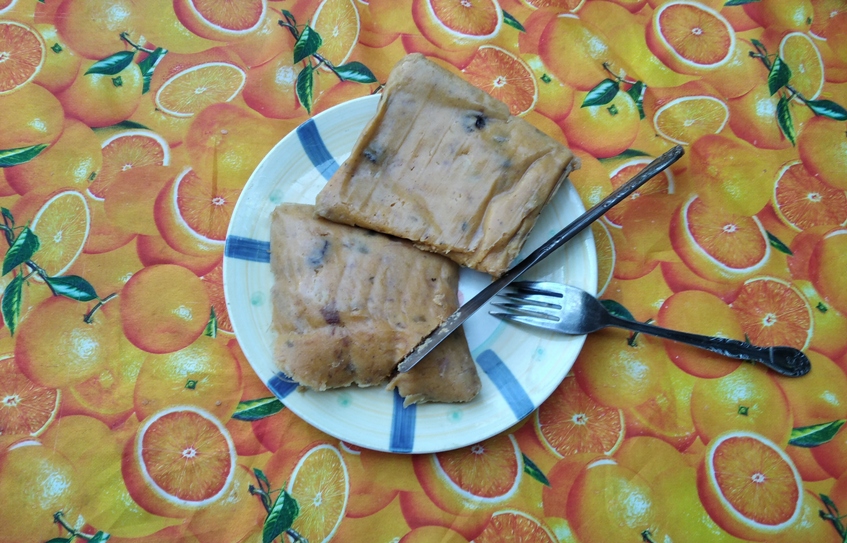
Here I end today's publication, I hope it has been pleasant for all of you. A big hug.

Estas fotos son de mi autoría y fueron tomada con un teléfono Xiomi REDMI 8 A / These photos are my own and were taken with a Xiomi REDMI 8 A phone .
Los separadores utilizados, son cortesía de @eve66 quien comparte hermosos diseños que embellecen el maquetado de nuestros post. / The dividers used are courtesy of @eve66 who shares beautiful designs that embellish the layout of our post.
El diseño de portada incluido en esta publicación, han sido elaborado por mi persona con la aplicación CANVA / The cover design included in this publication has been made by me with the CANVA application.
En caso de que se requiera emplear el contenido o imágenes de este post y de mis otras publicaciones, agradecería se hiciera referencia a mi autoría (Fabiola Martínez) y se citara el link correspondiente. Gracias. / In the event that it is required to use the content or images of this post and my other publications, I would be grateful if my authorship (Fabiola Martínez) was made and the corresponding link was cited. Thank you.

Hola amiga @sirenahippie, este post es maravilloso. El día que te comenté el que vi de los refranes, la semana pasada, también pude leer este pero el internet se fue totalmente, tanto así que hoy es que estoy retomando la acción en Hive. Este post me puso muy feliz, por ver el merecido apoyo que obtuviste por el. En cada detalle está evidenciado el corazón que le pusiste. ¡Y valió la pena! Felicitaciones amiga.
Un fuerte abrazo ♥
Lamento @parauri que hayas tenido inconvenientes con el Internet, pero creo que esta es una situación que nos afecta a todos en el país. Sí, yo también me puse bien contenta porque ví que varias personas comentaron, votaron y rebloguearon, y es que yo quiero eso, que la gente conozca, aprecie, valore nuestras tradiciones. Que si somos venezolanos estemos bien orgullosos de nuestra cultura, y si hay algún extranjero que la conozca, también le dé su justo valor. Gracias por pasar por aquí, un gran abrazo.
Y los has logrado amiga. Buena elección. Felicitaciones por tus nobles intenciones para Venezuela. Tu blog es un riconcito de amor por las tradiciones venezolanas. Y que la fuerza del internet te acompañe. 💪💻
☺
Mi abrazo @sirenahippie
La cocina venezolana es genial y los platos navideños ni hablar gracias por poner el nombre de Venezuela en alto una vez mas Tqm
Gracias por pasar a leer amiga @actioncats, siempre tenemos que sentirnos orgullosos de nuestras costumbres, y la cocina venezolana es una de las mejores del planeta, con muchas técnicas e ingredientes que la enriquecen mucho. Yo también te quiero mucho y admiro por tu hermoso trabajo como proteccionista. Un abrazo.
Realmente increible toda la dedicación que veo en este post, me encanto. Nunca he hecho las hallacas ni bollos navideños solo. En casa de mis padres en Venezuela si lo hicimos juntos muchas veces. Pero desde que estoy en el exterior, hace 6 años, no he hecho ninguna vez. Esta receta esta muy buena (aunque tendría que hacerle las adaptaciones vegetarianas pertinentes jejeje).
Muchas Gracias!
Me siento honrada por tus comentarios, es una alegría ver que te gustó mi post. Y sí, mi esposo y yo le dedicamos mucho a este plato, y por ende, traté de darle el mismo cariño a esta publicación, y aunque no utilicé todas las fotos del proceso, (por razones de espacio), sí coloqué las fundamentales. He probado hallacas y bollos navideños vegetarianos, y son muy muy sabrosos. Ojalá en un futuro te animes y puedas hacer esta receta con las respectivas adaptaciones del caso. Un gran saludo.
These look extraordinary! I can't imagine a vegetarian equivalent that would be just as good - I'm sure everyone loves them. I do like smoky food - any kind of smoky food! - but of course the meat isn't to my taste. I lvoed your post though - it's very interesting to learn of food from your country!
It is an honor that you have commented and voted on my post @riverflows, thank you very much. Yes, in fact, vegetarians in my country make Christmas buns and Hallacas without meat, and they are tasty too. This preparation is very laborious, but it is well worth doing it, and it is always a job that is done as a family. A big hug, that both you and your loved ones have a happy year 2021.
Yum! You have been curated @anggreklestari on behalf of FoodiesUnite.net on #Hive. Thanks for using the #foodie tag. We are a tribe for the Foodie community with a unique approach to content and community and we are here on #Hive.
Join the foodie fun! We've given you a FOODIE boost. Come check it out at @foodiesunite for the latest community updates. Spread your gastronomic delights on and claim your tokens.
Join and Post through the Community and you can earn a FOODIE reward.
It is an honor that I have been selected for the healing, thank you very much! A great greeting.